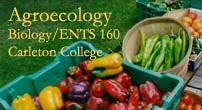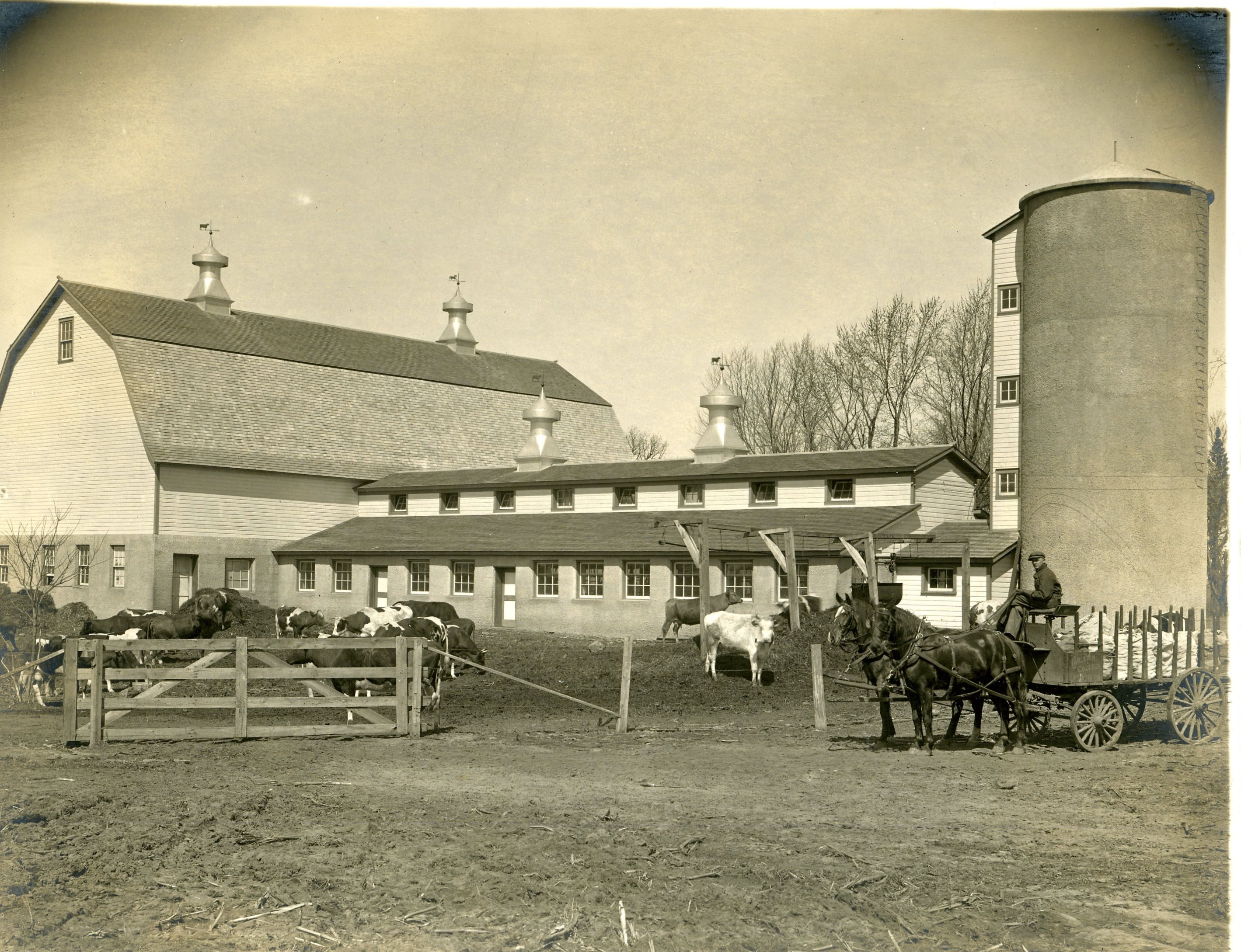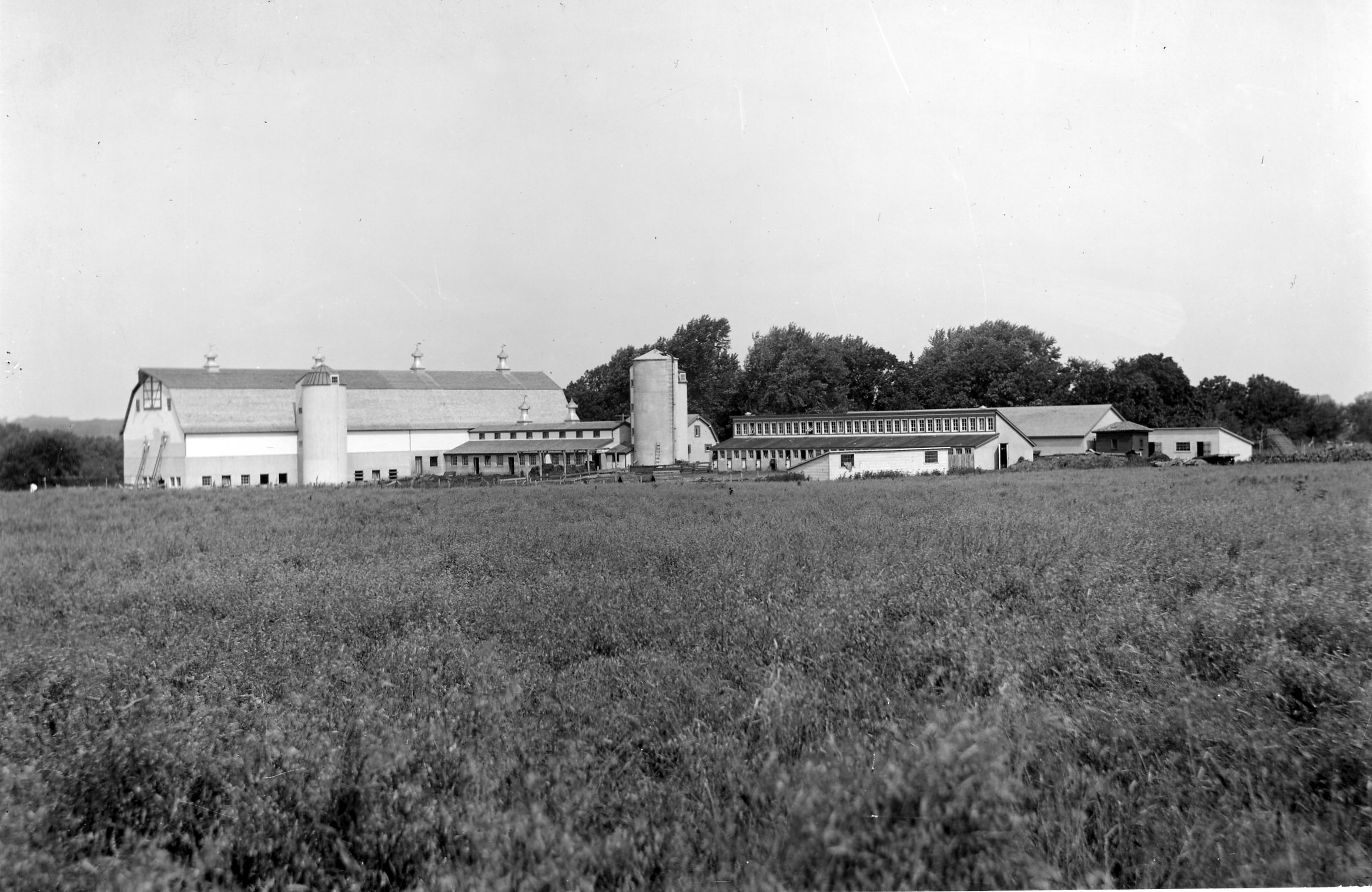
Farmelton
The Carleton Farm
A project of the Bio 160 Agroecology Course
A History of Farming at Carleton
The Beginning of On-Campus Farming
1914-1935
1914
In May 1914, Carleton College purchased 108 acres of land from local farmer Frank Parr, for $13,100. The original plan for the Carleton farm was to provide dairy and produce for the dining room. A December 1914 Carletonian article describes the newly purchased farm:
“Carleton College has a farm. Of course a farm isn’t an unusual thing in itself, but for a college to boast of a farm does seem at first a trifle strange. One can hardly conceive of a farm as being a necessary adjunct to a college campus. Yet the Carleton farm is really a vital part of the campus on the Eastern and Northern sides and it is to furnish vegetables, milk, and cream to the college dining hall.
The farm as purchased consists of 168 acres…it extends along Demosthenes Hollow up to Nourse cottage. Part of the campus below Laird hall is now fenced in as part of the farm pasture. Already part of the land has been plowed for next year. Twenty-three acres of corn were raised this year and there are 9 large oat straw stacks back of the barn. There is a small orchard on the farm and it is planned to increase this to about four acres.
One of the main objects in buying the farm seems to be to have been to furnish the college with vegetables and dairy products for the college dining room. It is hoped that by next year not only all the milk, but also a great many of the vegetables for the college dining room will be raised on the farm.”
-Carletonian, December 1914
The farm’s first manager was John T. Ormond, who ran it until 1916.
1916
In 1916, the farm was living up to expectations. In April of 1916, an additional 100 acre tract known as the “Olin Farm” was purchased by the college for $13,500. Therefore, under the control of the Carleton Corporation the farm had grown to 200 acres, and was providing a great deal of the school’s milk. The farm also provided employment opportunities, as a number of students worked on the farm in both the fall and the spring. The school also began to incorporate the farm into their curriculum. The Course Catalog for 1916-1917 includes the first agricultural classes offered at Carleton. These classes used the farm as a hands lab area, and all classroom work was supported by hands-on experiments. The classes offered included a study of farm plant life, as well as an animal husbandry class. However, these classes were short lived, as the agriculture department was only in the catalog for one year. In 1916 the John Ormon stepped down as farm manager, and was replaced by Mr. Ben Rieke.
Also in 1916, the Carleton farm was accepted as a member of the prestigious Holstein Fresian Association of America, a credit to the genetic purity of their thoroughbred cows.

Carleton's Farm circa 1916, courtesy of College Archives
1918
Carleton College purchased 80 more acres for the farm in September of 1918. This plot of land was located east of town, and did not join the rest of the town.

Carleton's Farm circa 1923 courtesy of College Årchives: notice Farm and Parr Houses on right
1926
In 1926 Carleton had the value of their herd assessed. In 1915, the Carleton herd was estimated to be worth $3,200, but the total book value in 1926 was over $50,000. In March of that same year the cattle farm suffered a fire; the horses and 84 head of catttle housed there were saved, but five calves and the herd sire were lost.

Carleton's Farm circa 1926, courtesy of College Archives
1929
In 1929, Carleton decided to develop an area of the farm, and they built 17 two-family steel structures east of the farm buildings. These had nothing to do with the running of the farm, and simply provided a scenic home for 34 student families (the on-farm housing was popular among married students).
1930
In April of 1930, Carleton once again expanded on the farm, purchasing an additional 156 acres.
1931
In 1931, student interest in horseback riding prompted the school to rent fifteen horses, which were stabled on the farm, in the area that is now the hill of three oaks. The current president of Carleton, Donald Cowling, hired a riding instructor, and the Carleton equestrian club was born. At first the club was funded entirely by the students themselves, who paid 50 cents per lesson. Soon however, the college allotted them funding, and deposited $1968 in the club account. As a final step, horseback riding was added to PE department for women.